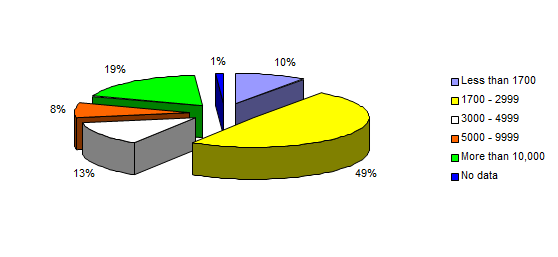Water allocation

World Bank. 1999. World Bank Atlas from the World Development Indicators. World Bank, Washington, DC, 63 pp.
In 2025, the population is expected to be 8.5 billion. All of these people need water for food production, municipal use, industrial water use, power generation, navigation, recreation, etc. At the same time, nature is increasingly recognised as a water user. With the volume of fresh water available for the various users remaining about the same, the competition between water users will continue to increase. Already, 10% of the world population lives in countries in arid and semi-arid regions where the annual available volume of water has dropped below the critical level of 1,700 m3 per capita per year. Even more alarming, an additional 49% of the world population is expected to pass the water scarcity limit before 2025



In water scarce regions, irrigated agriculture produces food and fibre for an ever growing population.
Due to the ever growing population, urban development often expands into high quality agricultural areas.
Although delta's and wetlands are recognised as important bio-systems, they often are the first to suffer.
> 40 years experience:
As early as 1970, I conceptualized (reconnaissance study) the Southern Conveyor in Cyprus. This canal and pipeline now supplies water from several river basins to major towns, irrigation and to nature. A pdf file of the 1970 report and the map can be downloaded.